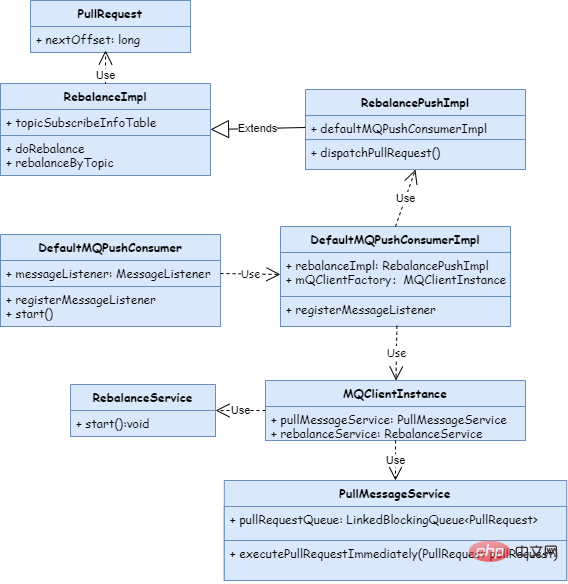
A common synchronization challenge in concurrent computing is known as the producer-consumer problem. Given that multiple threads or processes are designed to coordinate their operations when accessing a shared source; this problem requires complex communication tasks as well as balanced execution. Today's discussion will help to understand the concepts behind this difficulty, while recognizing its importance in contemporary computer science frameworks - particularly in C implementation practice.
Understanding the producer-consumer problem
Definition and purpose
The solution to the challenges posed by the producer-consumer problem comes from clearly dividing responsibilities between those responsible for producing and using information. When producers generate new records themselves, consumers ensure they are used correctly by synchronizing their operations. One must be careful to avoid problems such as race conditions or deadlocks, which can wreak havoc on data integrity if not managed.
Key components
Producer-consumer problems usually involve a shared buffer or queue that acts as an intermediary between producers and consumers. Producers add data items to the buffer, and consumers retrieve and process the items. Synchronization mechanisms such as semaphores, mutexes, or condition variables are used to coordinate access to buffers and maintain the integrity of shared data.
The Importance of Producer-Consumer Issues
Ensuring efficient resolution of the producer-consumer problem is critical in concurrent programming because it affects data integrity, resource usage optimization, and race condition prevention. A synchronized approach between producers and consumers can significantly increase throughput while reducing wait times and mitigating problems caused by concurrency on shared resources.
Implementation of producer-consumer problem in C
Shared buffer
The first step in implementing the producer-consumer problem is to create a shared buffer or queue. This buffer acts as a bridge between producers and consumers, allowing them to exchange data items. In C, a shared buffer can be implemented using a data structure such as std::queue or a circular buffer.
Synchronization mechanism
For perfect harmony between producers and consumers in C, various useful synchronization mechanisms exist. These methods include mutexes, which ensure sole access to shared assets; condition variables provided by C provide provisions for threads to wait for future conditions established during execution so that they can continue where they paused without Delays occur for these predetermined waiting times; finally, semaphores provide additional control over access to said resources, taking into account the information available about the resource at any given moment.
Producer implementation
The producer function or thread is responsible for producing data items and adding them to the shared buffer. It obtains the necessary synchronization primitives (such as mutexes) to protect access to the buffer and ensure mutual exclusion. Once a data item is generated, it is added to the buffer and, if necessary, signaled to the consumer.
Consumer Implementation
Consumer functions or threads retrieve data items from the shared buffer and process them. Similar to the producer, the consumer obtains the required synchronization primitives and ensures mutual exclusion when accessing the buffer. It retrieves items from the buffer, processes them as needed, and notifies the producer when the buffer becomes empty.
Challenges and Solutions
Synchronization and Deadlock
One of the main challenges in implementing the producer-consumer problem is to avoid problems such as deadlock or livelock. Care must be taken to establish appropriate synchronization mechanisms to ensure mutual exclusion and avoid potential deadlocks by carefully managing the order in which locks are acquired and released.
Buffer overflow and underflow
Another challenge is handling buffer overflow or underflow situations. Buffer overflows can result in data loss because producers produce more frequently than consumers consume what they produce. The opposite can also be caused by a situation where the consumer is consuming faster than the producer can keep up - empty buffers forcing them to wait indefinitely for the consumer. Proper synchronization and buffer management techniques are required to handle these scenarios effectively.
Two sample codes demonstrate the use of different synchronization mechanisms to implement the producer-consumer problem in C
Using mutexes and condition variables
Example
#include <iostream>
#include <queue>
#include <thread>
#include <mutex>
#include <condition_variable>
std::queue<int> buffer;
std::mutex mtx;
std::condition_variable cv;
void producer() {
for (int i = 1; i <= 5; ++i) {
std::lock_guard<std::mutex> lock(mtx);
buffer.push(i);
std::cout << "Produced: " << i << std::endl;
cv.notify_one();
std::this_thread::sleep_for(std::chrono::milliseconds(500));
}
}
void consumer() {
while (true) {
std::unique_lock<std::mutex> lock(mtx);
cv.wait(lock, [] { return !buffer.empty(); });
int data = buffer.front();
buffer.pop();
std::cout << "Consumed: " << data << std::endl;
lock.unlock();
std::this_thread::sleep_for(std::chrono::milliseconds(1000));
}
}
int main() {
std::thread producerThread(producer);
std::thread consumerThread(consumer);
producerThread.join();
consumerThread.join();
return 0;
}
In our implementation, we utilize mutexes (std::mutex) to maintain order and avoid conflicts within the shared buffer system, while allowing producers and consumers to interact with it seamlessly. Additionally, the use of condition variables (std::condition_variable) plays an integral role in ensuring consistency within decision areas that require coordinated actions, thus improving performance.
Output
Produced: 1 Produced: 2 Produced: 3 Produced: 4 Produced: 5 Consumed: 1 Consumed: 2 Consumed: 3 Consumed: 4 Consumed: 5
Use semaphore
Example
#include <iostream>
#include <queue>
#include <thread>
#include <semaphore.h>
std::queue<int> buffer;
sem_t emptySlots;
sem_t fullSlots;
void producer() {
for (int i = 1; i <= 5; ++i) {
sem_wait(&emptySlots);
buffer.push(i);
std::cout << "Produced: " << i << std::endl;
sem_post(&fullSlots);
std::this_thread::sleep_for(std::chrono::milliseconds(500));
}
}
void consumer() {
while (true) {
sem_wait(&fullSlots);
int data = buffer.front();
buffer.pop();
std::cout << "Consumed: " << data << std::endl;
sem_post(&emptySlots);
std::this_thread::sleep_for(std::chrono::milliseconds(1000));
}
}
int main() {
sem_init(&emptySlots, 0, 5); // Maximum 5 empty slots in the buffer
sem_init(&fullSlots, 0, 0); // Initially, no full slots in the buffer
std::thread producerThread(producer);
std::thread consumerThread(consumer);
producerThread.join();
consumerThread.join();
sem_destroy(&emptySlots);
sem_destroy(&fullSlots);
return 0;
}
Semaphores (sem_t) play a crucial role in managing access to shared buffers through this code. Our implementation uses the emptySlots signal to limit free space within the buffer and the fullSlots signal to track used storage space. To maintain the integrity of the producer-consumer mechanism, producers wait until an empty slot is found before producing new content, while consumers wait until data can be consumed from pre-occupied slots.
输出
Produced: 1 Consumed: 1 Produced: 2 Consumed: 2 Produced: 3 Produced: 4 Consumed: 3 Produced: 5 Consumed: 4 Consumed: 5
结论
生产者-消费者问题是并发编程中的一个基本挑战,需要在多个进程或线程之间进行仔细的同步和协调。通过使用 C++ 编程语言实现生产者-消费者问题并采用适当的同步机制,我们可以确保高效的数据共享、防止竞争条件并实现最佳的资源利用率。理解并掌握生产者-消费者问题的解决方案是用 C++ 开发健壮的并发应用程序的基本技能。
The above is the detailed content of Producer-consumer problem and its implementation in C++. For more information, please follow other related articles on the PHP Chinese website!
 中点线生成算法的C++实现Sep 09, 2023 pm 07:49 PM
中点线生成算法的C++实现Sep 09, 2023 pm 07:49 PM一条线连接两点。它是图形中的基本元素。要绘制一条线,您需要两个点,您可以在屏幕上在这两个点之间绘制一条线,就图形而言,我们将这些点称为像素,每个像素都与整数坐标相关联。我们以(x1,y1)和(x2,y2)的形式给出整数坐标,其中x1
 阿里二面:RocketMQ 消费者拉取一批消息,其中部分消费失败了,偏移量怎样更新?Apr 12, 2023 pm 11:28 PM
阿里二面:RocketMQ 消费者拉取一批消息,其中部分消费失败了,偏移量怎样更新?Apr 12, 2023 pm 11:28 PM大家好,我是君哥。最近有读者参加面试时被问了一个问题,如果消费者拉取了一批消息,比如 100 条,第 100 条消息消费成功了,但是第 50 条消费失败,偏移量会怎样更新?就着这个问题,今天来聊一下,如果一批消息有消费失败的情况时,偏移量怎么保存。1 拉取消息1.1 封装拉取请求以 RocketMQ 推模式为例,RocketMQ 消费者启动代码如下:public static void main(String[] args) throws InterruptedException, MQClie
 队列的生产者与消费者模式在PHP与MySQL中的实现方法Oct 15, 2023 pm 02:33 PM
队列的生产者与消费者模式在PHP与MySQL中的实现方法Oct 15, 2023 pm 02:33 PM队列的生产者与消费者模式在PHP与MySQL中的实现方法随着互联网业务的快速发展,系统中处理大量任务的需求变得越来越迫切。队列是一种常见的解决方案,可以高效地处理任务。队列的生产者-消费者模式(Producer-ConsumerPattern)在PHP和MySQL中的实现方法是一种常见的解决方案,本文将介绍具体的实现方法,并提供代码示例。生产者-消费者模式
 生产者-消费者问题及其在C++中的实现Sep 17, 2023 pm 11:09 PM
生产者-消费者问题及其在C++中的实现Sep 17, 2023 pm 11:09 PM并发计算中普遍存在的同步挑战被称为生产者-消费者问题。鉴于多个线程或进程旨在在访问共享源时协调各自的操作;这个问题需要复杂的沟通任务以及平衡的执行程序。今天的讨论将有助于理解这一困难背后的概念,同时认识到它在当代计算机科学框架中的重要性-特别是在C++实现实践中。理解生产者-消费者问题定义和目的解决生产者-消费者问题带来的挑战的解决方案来自于明确划分负责生产和使用信息的人员之间的责任。当生产者自行生成新记录时,消费者通过同步他们的操作来确保它们被正确使用。人们必须小心避免竞争条件或死锁等问题,如
 高通骁龙4代2亮相Jun 28, 2023 am 08:02 AM
高通骁龙4代2亮相Jun 28, 2023 am 08:02 AM高通推出了其最新的移动平台高通骁龙4Gen2,这款新的处理器和平台专为价值智能手机而设计,我们可以期待在2023年下半年看到它用于智能手机。高通技术公司宣布推出新的Snapdragon4Gen2移动平台,该平台经过创造性设计,为全球更多消费者提供令人难以置信的移动体验。骁龙4Gen2提供轻松的全天使用,具有快速的CPU速度、清晰的摄影和摄像,以及快速的5G和Wi-Fi以实现可靠的连接。®“骁龙-其核心-正在推动创新,同时满足OEM和更广泛行业的需求,”高通技术公司产品管理总监MatthewLop
 最大化在给定的二进制字符串子串中可以删除的少数字符数量,使用C++实现Aug 31, 2023 am 09:33 AM
最大化在给定的二进制字符串子串中可以删除的少数字符数量,使用C++实现Aug 31, 2023 am 09:33 AMOurcurrentundertakinginvolvesmaximizingthenumberbywhichwecandeleteanyoccurrencescontainingtheminoritycharacter(s)withinasectioncomprisedentirelybyeither'0'or'1'.Theendgoalissimplytoreachmaximumpossibledeletionswhilestillrespectingallgivenrulesandcons
 调查显示:消费者对人工智能数据使用产生冲突Apr 18, 2023 pm 02:01 PM
调查显示:消费者对人工智能数据使用产生冲突Apr 18, 2023 pm 02:01 PM思科的一项新的调查显示,消费者支持人工智能,但担心企业如何使用这项技术,超过一半的受访者表示,由于使用人工智能,他们对组织失去了信任。这些数据在思科的2022年消费者隐私调查中披露,该调查是对消费者对数据隐私的看法和行为的年度全球审查。今年的调查强调了进一步提高透明度的必要性,因为消费者表示,他们的首要任务是让组织在如何使用个人数据方面更加透明。思科的调查还显示,虽然消费者支持人工智能(54%的人愿意分享他们的匿名数据以改进人工智能产品),但65%的人因使用人工智能而失去了对组织的信任。“企业
 Smart精灵#1 Pulse心动版购车权益揭秘,盛情奉献消费者福利!Aug 21, 2023 pm 05:13 PM
Smart精灵#1 Pulse心动版购车权益揭秘,盛情奉献消费者福利!Aug 21, 2023 pm 05:13 PMSmart官方今日发布了全新的Smart精灵#1Pulse心动版权益调整公告,为消费者提供了更多购车福利。根据公告,在2023年8月16日至8月31日期间购买Smart精灵#1Pulse心动版的消费者将享受一系列丰厚的购车权益,这不仅为爱车者提供了更多实惠,还进一步提升了Smart精灵#1Pulse心动版的市场吸引力据了解,新的购车权益调整方案包括多个福利,其中之一是车辆尾款抵扣权益。购车者可以在尾款中享受高达1万元的抵扣,减轻了一部分经济压力。此外,官方还提供了免费升级权益,包括密友氛围组套装


Hot AI Tools

Undresser.AI Undress
AI-powered app for creating realistic nude photos

AI Clothes Remover
Online AI tool for removing clothes from photos.

Undress AI Tool
Undress images for free

Clothoff.io
AI clothes remover

AI Hentai Generator
Generate AI Hentai for free.

Hot Article

Hot Tools

Dreamweaver Mac version
Visual web development tools

SublimeText3 Linux new version
SublimeText3 Linux latest version

SublimeText3 Chinese version
Chinese version, very easy to use

SublimeText3 English version
Recommended: Win version, supports code prompts!

ZendStudio 13.5.1 Mac
Powerful PHP integrated development environment







